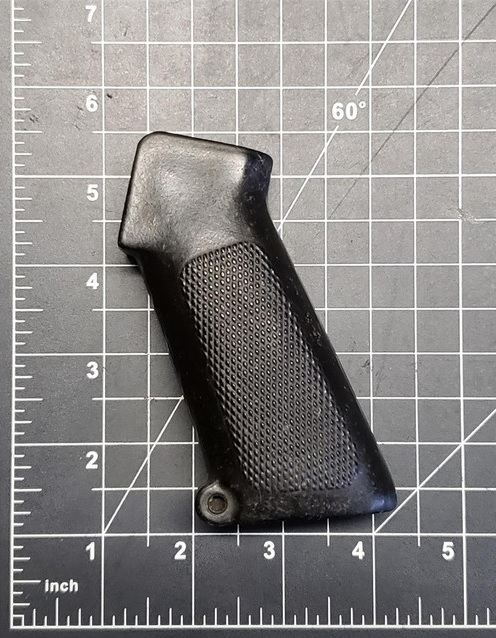Firearm Parts That Can Reduce Recoil and Improve Handling
Oct 28th 2024
There are lots of ways you can reduce recoil with your rifle or handgun. One of the easiest ways is to shoot a round that produces slightly lower muzzle energy, which in turn will result in lower felt recoil.
Another is to make sure you’re holding and, where applicable, bracing the gun appropriately. Adopting a solid grip, stance, and form, and leaning into the shot, can all help mitigate recoil.
But what about when you know for sure you’ve dialed in the rounds you want to be shooting based on the application, and are confident in your grip and stance?
What then can you do to reduce recoil?
Well, with the addition of these firearm parts (where applicable) you may be able to further cut back on felt recoil. Let’s take a closer look.
Compensators and Muzzle Brakes

If there’s one single firearm part that can cut recoil, and which is a viable solution for the widest range of guns, it’s a muzzle brake (also called a compensator when mounted to a pistol).
Muzzle brakes and compensators are special muzzle devices that redirect gasses ported at the muzzle, lowering the overall force of felt recoil and in some cases even actively countering muzzle flip.
In muzzle brakes and compensators in which gasses are ported upwards, there may be a net force downward on the muzzle, helping to cut felt recoil and muzzle jump.
This makes compensators and muzzle brakes the most practical firearm parts for recoil reduction, and in many cases they can cut felt recoil by 50% or more without adversely affecting shot power.
There is just one thing: most compensators and muzzle brakes require a threaded barrel (except for barrels that are integrally compensated or braked). If your barrel is unthreaded you may need a new one or take it to a gunsmith to have it threaded.
Suppressors
If you’re looking for a muzzle device that can offer recoil reduction and then some, get a suppressor instead of a muzzle brake.
Like muzzle brakes, suppressors (also known as silencers) are muzzle devices that trap and redirect gasses at the muzzle, cutting down on the overall effect of recoil. Like compensators, they can cut recoil by as much as 50% without adversely affecting shot power.
But with a suppressor, not only do you not adversely affect shot power, you get extra shot power. This is because the suppressor increases chamber pressures, resulting in a slight FPS boost to the bullet.
And, on top of that, suppressors make the gun shoot quieter, reduce muzzle pop, and can mitigate or even eliminate muzzle flashes.
There’s just one big catch with suppressors; they are NFA items. So, if you want to get one, you will need a tax stamp for each one that you apply to purchase.
Stocks and Grips

Stocks and grips don’t actually cut back on felt recoil, but by swapping the stock or upgrading the grip on your rifle or pistol, you can improve the ergonomics and make it easier to absorb and control recoil.
This is a particularly big deal with handguns, in which poor grip ergonomics can result in a gun that is difficult and uncomfortable to shoot.
Whereas, if you get a new set of grips, or overmold the current grips, you can make it much easier to control the gun, mitigate recoil, and shoot more accurately and confidently.
Buffer Weights
If you shoot a rifle with a gas system and a buffer tube system, adjusting the buffer weights can help mitigate felt recoil, all without requiring you to tinker with the gas system (which is best left to a gunsmith, anyway) - or at least someone that really knows what they’re doing.
Just by upping the buffer weight, you increase the reciprocating mass of the rifle, which means the bolt carrier group needs to overcome more mass in order to cycle the action. The effect of increasing buffer weight is that (holding all over variables contact) recoil will come down.
There’s just one thing. Making the buffer weight too heavy can result in a failure of the BCG to cycle fully, which can result in failures to extract or eject - just something to be aware of.
Guide Rods and Recoil Springs
For pistol shooters, two firearm parts you can tinker with to cut back on recoil are the guide rod and recoil spring.
As for the guide rod, adding a heavier guide rod to the gun (like a tungsten guide rod) will add static mass near the muzzle. This will help absorb the force of recoil; it will also weigh down the muzzle, stabilizing the gun.
Changing the recoil spring can also help cut back on felt recoil but you will want to be careful. Too light and you might not get consistent cycling, not to mention the spring will likely fatigue sooner.
Get These and Other Firearm Parts at SARCO
Interested in learning more about these firearm parts which, when swapped or adjusted on your gun, can help you fight back against recoil? Take a look through our full catalog of gun parts and get in touch with us directly at 610-250-3960 if you have any questions.

